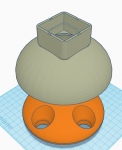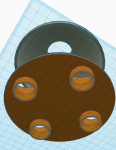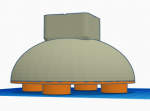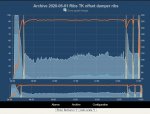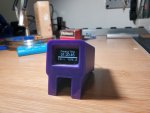I'm starting to design an adapter to a damper design to fit on my new Char-Broil Kamander. The plan is to print it in PETG, and I will design it in Tinkercad. I am looking for advice / thoughts on where it would be best to attach the damper. The Kamander has a convenient location of the inlet valve on the side of the desk, shown with arrows here:
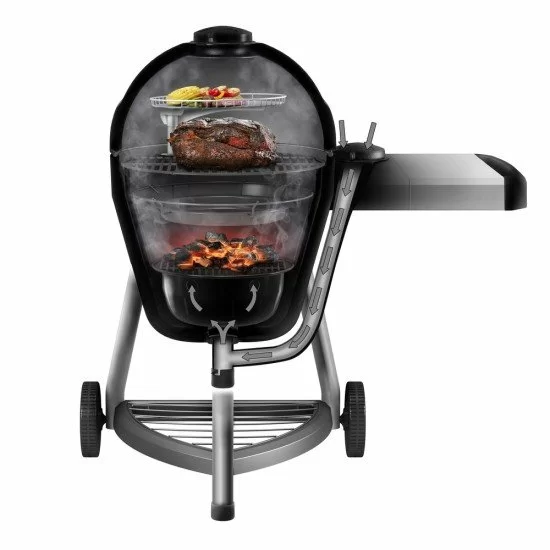
but there is also the "dust cap" in the pipe on the bottom, so it would be possible to locate the damper there, if there's any sense to do that. My primary choice however would be to put in on the desk where it's convenient, and make the adapter a big one to fully cover the inlet valve and make the design so that it locks the inlet valve fully open when it's inserted on there. I was thinking if I add some neodymium magnets and a bit of sealing tape, it could mount onto the inlet valve airtight. This is how the inlet valve looks close up, the inlet valve itself is cast iron, so no magnet holding that, but the magnets would attach to the steel its mounted on:

If that wouldn't work, the ash cap in the bottom is another option, I could design the adapter so that the ash wouldn't fall directly in the damper, but still I feel I would rather do the one on top instead, if there's no reason it wouldn't work:

Any reason it wouldn't work on the top of the table?

but there is also the "dust cap" in the pipe on the bottom, so it would be possible to locate the damper there, if there's any sense to do that. My primary choice however would be to put in on the desk where it's convenient, and make the adapter a big one to fully cover the inlet valve and make the design so that it locks the inlet valve fully open when it's inserted on there. I was thinking if I add some neodymium magnets and a bit of sealing tape, it could mount onto the inlet valve airtight. This is how the inlet valve looks close up, the inlet valve itself is cast iron, so no magnet holding that, but the magnets would attach to the steel its mounted on:

If that wouldn't work, the ash cap in the bottom is another option, I could design the adapter so that the ash wouldn't fall directly in the damper, but still I feel I would rather do the one on top instead, if there's no reason it wouldn't work:

Any reason it wouldn't work on the top of the table?

